
by Rory Midhani
The World Wide Web has been delightfully witchy this past month, with Thug Scholar writing about the Unapologetic Queerness of Haitain Vodou, a group of witches hexing that human dumpster fire Martin Shkreli, Slashfilm featuring an oral history of the witch movie classic, Teen Witch, people writing about their Millenial and Political witchcraft and much more. Afterellen had this really great roundup of lesbian witches in TV and Movies cleverly titled “Witch Hunt: Lesbian Witches in Pop Culture.” I wish I had thought of that name for an article about witches. I was also interviewed along with Rhea Wolfe, Emma Rault and Rebecca Artemisa (who I’m a huge fan of) for Bitch Media’s Popaganda podcast about modern day witches and witches in pop culture. It’s a pretty great podcast you guys, I hope you all check it out!
A LOT of queer ladies saw the new horror film The Witch over the past couple weeks and A LOT of them DID NOT like it ONE BIT. For my favorite thoughts on the movie by someone who doesn’t write for Autostraddle, you should check out the ever-clever Mallory Ortberg says at The Toast. You can also see our very own Aja give her wonderful take on it later in this column.
As usual, we at Autostraddle had our fair share of witchy content. There are the usual (and always great) contributions by Beth, Corina and, if I may say so myself, me. My Drawn to Comics column featured an exclusive preview of a comic by Aatmaja Pandya from The Other Side, a queer paranormal romance comic anthology. Corina’s Satellite of Love brought eternally helpful and wise horoscopes. Beth’s Fool’s Journey brought a roundup of wonderful Tarot links and another entry about how to deal with restlessness. Erin also added her hilarious and very helpful list of 5 Things to Keep in Mind Before Seeing The Witch.
I really wish I didn’t have to talk about this, but unfortunately, I feel like I do. JK Rowling, the creator of Harry Potter, and one of my all-time favorite fictional universes has recently started to release information about the history of magic in North America. Now, as a bruja, a witch who’s magic and traditions are rooted in Mexican (North American) magic, I was really excited to see what kind of wizarding world would exist here. After I read what she said my excitement fell into heavy disappointment. Over on Native Appropriations, Dr. Adrienne Keene gets right to the issue of it all, talking about how in rewriting the very real history of magic in North America this way, Rowling is participating in and continuing the tradition of colonization and appropriation of Indigenous culture. This kind of wildly disrespectful treatment of such sacred things is honestly breaking my heart, especially by someone who’s work has meant so much to me.
Another writer, Mari Kurisato took to twitter to make some extremely important points about the kind of real and lasting damage this kind of treatment of Native peoples does to real life living people. Her tweets are storified, but you should really check out her twitter (and that of Dr. Keene) to learn more about this.
Playlist: Musical Spell for Curing a Broken Heart
https://play.spotify.com/user/autostraddle/playlist/6gTskiDyu4b81r8QGqJFWX
Words With Witches
by Rachel
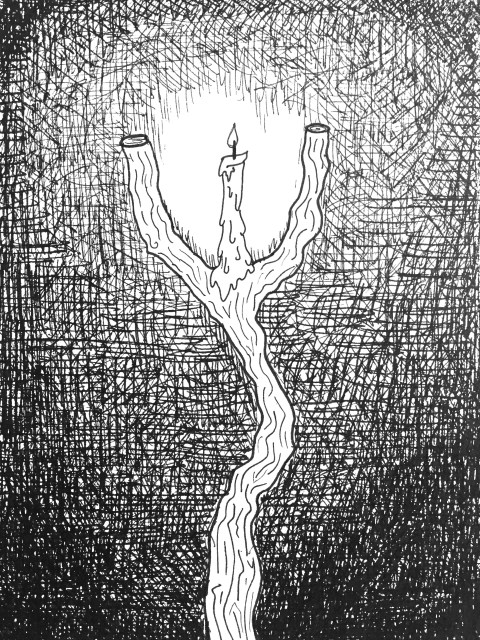
stang (noun) – In Western traditional/folkloric witchcraft, especially that following the teachings of English occultist Robert Cochrane, a stang is a forked stick with the longer, unforked end anchored in the ground. For ceremonial and magical use, it can be “an axis on which magic can turn,” a tool to cast a circle, and/or can be used by a witch to “ride” into another world or astral realm. It may also be represented not as a forked piece of wood but a “a iron-tined pitchfork or a pole with the skull of a horned beast on it;” it is linked to the Horned Lord/Witch Lord and to horned/antlered animals. The forked stang may have either a central third tine or a candle lit between the two tines that represents a “middle path” associated with the dead; the stang may also be made out of ash wood to associate with Yggdrasil, a holy tree of Norse mythology.
(Sourced mostly from the American Folkloric Witchcraft blog)
Witches Who Sing
by Molly
Wheel of the Year
by Beth
They say that March comes in like a lion, and goes out like a lamb. As I write this, on the 4th March, snow is falling thickly past my window, and the idea of spring seems far away. Yet, in under three weeks, we will be celebrating the equinox, the first day of spring.
Here in the UK (and everywhere east of this), the equinox falls on March 20th, though in many parts of the US it will be the 19th. Check this map for your local date. (And if you’re down under, you’ll find a short piece on the autumnal equinox here.)
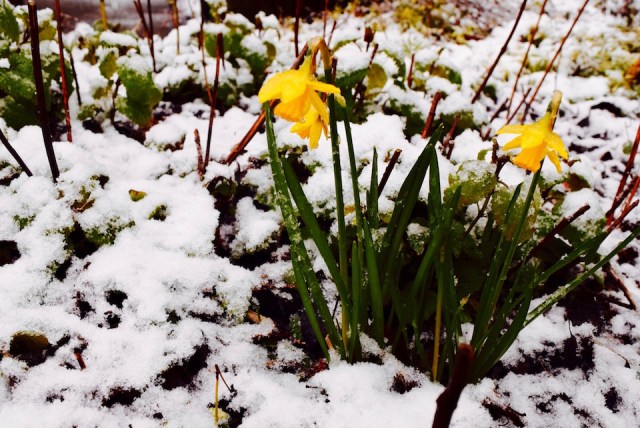
Winter snow and then the warmth of spring, night and day, moon and sun, light and dark, the vernal equinox is a festival of balance. The sun leaves watery Pisces and moves into fiery Aries around this date.
Much of the information available about this festival focuses on ‘the union of male and female’. The maiden (often the goddess Brigid) and the ardent, potent young male coming together to create new life. The ‘masculine’, active energy of the sun and the passive ’feminine’ moon. We can queer this by ignoring the gender essentialism of the metaphors so often used in spring traditions, and focusing on the deeper meaning, which is all about blending those opposites to achieve something wonderful. When we can get fire and water working together, our outer lives and our inner lives given equal attention, magic happens, things begin to grow, new life springs forth, new possibilities emerge. It reminds me very much of the Temperance tarot card, with its themes of blending water and fire – apparent opposites. (Related: Temperance also featured as the key card in this tarot reading for a genderqueer person looking for ways to get their masculine and feminine sides working together.)

At Imbolc, when we were still in the midst of winter but could feel spring on its way, we looked forward to new growth and prepared for this time. Now – we are ready to act, to make the inner and outer work together. How can you begin to manifest the ideas you have been incubating? How can you enact what you hold inside, making your inner desires tangible and real? How can you make the impossible possible?
Glennie Kindred – my favourite writer on Wheel of the Year celebrations – offers this simple ritual, using a symbol of potency frequently associated with spring: an egg.
Pass an egg or imaginary egg around the circle, each focusing on what they have been incubating since the autumn and wish to bring out into the world. This is the fertile time. Being aware of your direction will greatly enhance the outcome. Share your thoughts with each other if you want to, before passing the egg on to the next person. At the end place the egg or imaginary egg on the shrine.
Glennie Kindred, Sacred Earth Celebrations
Spring’s element is air, whose qualities of clarity, foresight, cleansing and light blow in on the breeze. Spring cleaning traditionally takes place now (if you didn’t already do this at Imbolc!); we are ready to de-clutter, physically. As sunlight returns we notice the dirt on our windows, the dust in our homes, the clutter that builds up in the winter months.
A few ways to celebrate Spring Equinox:
- Try Alexis J Cunningfolk’s ‘Brightening’ tarot spread
- Spring cleaning and decluttering.
- Especially, clean your sacred things – wands, crystals, altar items. You can make a traditional cleansing wash using hyssop by adding drops of the essential oil to water, or make a simple tea and use this to wash your things.
- Make crafts that celebrate the wind and air: colourful flags, streamers and kites. Then get out and run with them and watch them fly in the wind!
- Read all about dragons
- Climb a hill and breathe in the fresh air, taking in the view.
- Decorate eggs – hard-boil them or blow them and paint in bright colours. You can give them as gifts or decorate your home. Or host a good old-fashioned egg-hunt.
- Make tea or tincture from cleansing herbs – cleavers and nettle are both traditional spring tonics.
- For your altar: Daffodils and yellow flowers, catkins, eggs, dragon-like symbols. Symbols of air, like feathers.
My Favorite Witch
by Alaina
I love a good story about a scorned woman getting her revenge, and the Witch from Into the Woods is one of the greatest stories out there. This woman was so dedicated to her garden’s success, that she cursed a family for messing with her greens: “Greens, greens, nothing but greens: parsley, peppers, cabbages and celery, asparagus and watercress and fiddle ferns and lettuce!” After all, a witch’s garden is very important to her! Besides the Witch being a badass rapper, she also has a heart.
She’s not a monster, she’s a woman wronged who is demanding that those wrongs be righted before she wipes the slate clean. She gives the Baker and the Baker’s Wife all the tools they need to break the curse, and even tells them that once it’s broken, it doesn’t mean that everything will be fixed. “Sometimes the things you most wish for are not to be touched.” She’s trying to help! But no one listens to you when you’re a witch—thanks a lot patriarchy.
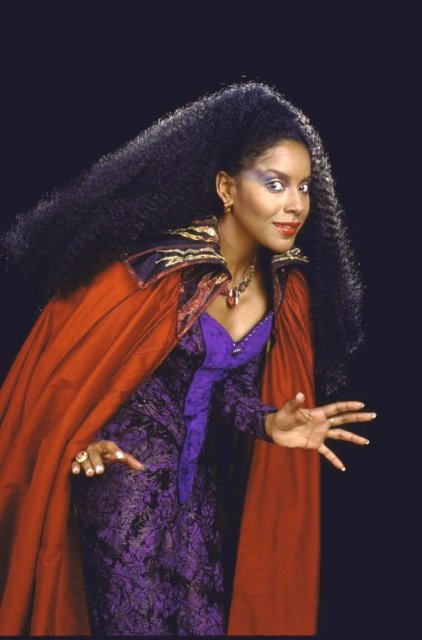
Actress Phylicia Rashad in a scene from the first replacement cast of the Broadway musical “Into the Woods”.
Not only is the Witch a powerful character on her own, she has a history of being played by amazing women who bring her to life in new and exciting ways every single time. Bernadette Peters originated her and Phylicia Rashad, Donna Murphy, Vanessa Williams, and Meryl Streep have all played her. Each of these women have pushed past what could easily be played flatly as an evil hag with no morals to create a fully rounded character. One who is broken and breaks, heals and is healed. When I wanted to be an actor I wanted to play her, and now that I’m figuring out my identity as witchy person, I want to be her. She will always be my favorite witch.
A Witch Watches The Witch
by Aja
Before I had any idea I’d be writing this review, The Witch only barely leapt at the corners of my peripheral; I hadn’t seen any of the trailers, hadn’t read any articles or done any digging. But I was in the mood for something spooky, and what I did know was that the cinematography looked striking and that it seemed more artful than most films. Especially most horror films; my eighteen-year-old daughter and her friends go catch every new horror movie that comes out, no matter how spectacularly bad it looks. (In fact, I think the worse it does, the more excited they are to see it. The last one was The Boy and she still snickers every time it comes up.) I wanted to see if she’d come along with her old mom instead this time, so we watched this trailer and then this trailer together, and despite it being broad daylight she sort of whimper-wailed and backed away from the laptop. The trailers leave you leaden with dread, but they’re hypnotizing.
The Witch leaves you stupefied and spent; stupefied because it’s shot almost entirely in natural light and on a set of staggering attention to detail (“directly from period journals, diaries, and court records”) — the only salve the film offers, and spent from the patience it demands for ninety-three relentless minutes of excruciating silence alternated with unintelligible but wonderful lyricism in the dialogue that you strain to hear over the howling of the score, which often skids without warning into more silence, or the sound of wood splitting, or the way people scream at one another when they’re unconcerned with being overheard.
Thomasin is our main character in a perpetually clouded-over 17th century Puritan Christian New England. Though she is bright, devout and (mostly) obedient, her world begins to unravel after her family is exiled from their plantation and they are forced to make a life at the edge of a dark little miserable wood. To keep her company, there is a slightly younger brother, Caleb, and two naughty much younger twins, Mercy and Jonas. Their mother, Katherine, gives birth to the youngest, little baby Samuel, after they’ve settled into a very modest home with failing crops and a pair of black and white goats. Despite her father’s raspy, resonant growl-speak and penchant for endlessly chopping firewood, he is frequently engaged in bargaining with those around him; it perfectly embodies the uncertain desperation of a patriarch who’s put all of his family’s eggs into the basket of a silent, indifferent god.
So things are already not going well when wee Samuel goes missing on Thomasin’s watch; the word ‘witch’ shifts from a silly creekside taunt to life-threatening accusation in an alarmingly short amount of time. There are, we know, witches in the woods. They do unspeakable things: nude and horribly bent, old grey flesh smeared with ghastly red unguent, another is barefoot but clothed, long inky ringlets spilling into overflowing cleavage, quick to seduce a frightened child.
There are little brown following rabbits, an erratic goat called Black Phillip, the white one who suddenly gives blood instead of milk. But there is also Katherine’s contempt toward Thomasin long before the baby goes missing, William’s growing weakness and inability to provide for his family, Caleb’s lingering glances at his sister’s maturing body whether she is asleep or awake, the twins’ havoc and idleness. The adults speak in hushed tones of trading Thomasin off to another family, setting off a ghoulish chain of unforgettable events. Whatever strength or faith they may have had when they left the plantation, William and Katherine — their children rapidly dwindling in number — are slowly consumed by paranoia, hysteria, and madness.
In the end, nothing is left but a circle of power. Within it, either damnation or deliverance. Flames crackle and lick the sky where a thick cluster of treetops release themselves to the night. Women whirl and rise, skin naked and radiant with light. When I left the theater, it was a little bit fearful of the darker things women do to protect one another from men and their deadly fear of female power. Now I wish we went there more often.
Practice of the Month
by Rachel
Ritual is important to all of us, no matter how witchy we are or aren’t. There are rituals that are passed down to us, like a religious ceremony or the tradition of stopping at the Auntie Anne’s on Rt. 495 after visiting Grandma; there are rituals we create for ourselves, like having a cup of hot cocoa and putting on Person of Interest after a long day, or going for brunch at the same place every Sunday. Rituals commemorate important or meaningful occasions; they can help us produce states of mind or feelings that we want to achieve, or process feelings we’re already experiencing. They can help us connect with others or spend time with ourselves alone. They can help us remember where we put our keys, because our brains are weird machines. This will be a discussion about how to purposefully design a ritual of your own in an intentional way centered around your needs!
This is totally arbitrary and personal, but I find it useful to think about ritual as being either in response to something or as attempts to bring about some kind of response. A ritual that responds to something might be a ritual that you undertake every full moon as a witch; or like the ritual my friends had in college to make a pan of nachos and get high together every Friday afternoon to celebrate the end of the week. There may also be an association that helps your ritual, even if it’s not for it — a small daily ritual for healing might feel more powerful to you if you do it at the same time that you take your medication each day, associating the two of them. A ritual that’s meant to invoke a response might be one designed to make you feel calm when you’re anxious, or to bring you closer to your ancestors. The distinction isn’t set in stone or super important, binaries aren’t necessarily real etc. But it can be useful to think about what you’re mostly looking for when you’re starting out.
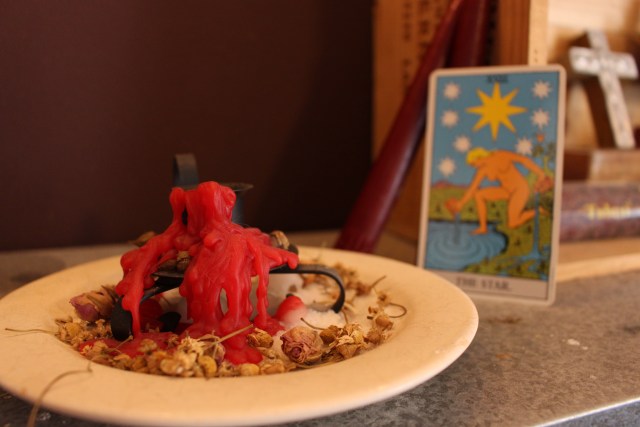
So at this point maybe you’ve got a general idea of what you want this ritual to be for; the next step is to look around and take inventory of what you have at your disposal to use or integrate. Off the top of my head, here are some things in and around my apartment that I could probably use for something ritualistic if I wanted to:
- a bathtub and shower
- coffee and tea
- candles
- scented incense
- tarot cards
- different clothing/outfits
- pretty much any music I can find on the internet
- a few scented essential oils
I could go on, but that’s a pretty good start! Again, this is subjective and personal, but I feel that especially good things to integrate into rituals both spiritual and secular are: 1) things with a strong sensory element 2) things with symbolic significance 3) things with personal or emotional significance. Do you have to use all three of those types of elements? No, of course not, but you may find them helpful.
Keep in mind your own internal resources, too, and don’t feel pressured by what concepts of meaningful rituals “should” look like to exceed them. For instance, if you have challenges related to memory or executive function, don’t feel like you need to do something complex with ten steps that takes an hour to complete; many people find rituals like two or three minutes of quiet mindfulness hugely transformative, with no props or elaborate ceremony.
Once you’ve got an idea of what elements are at your disposal, think about which of them relate to the purpose of your ritual, and how. For instance, to me chamomile tea symbolizes calmness and comfort, I know that I find the smell of lavender soothing on a biological sensory level, and I have in my closet a comfy, saggy sweater of my mother’s that I used to wear as a kid if I was cold or upset. So a great ritual for me if I wanted to feel comfort and safety would be to put on that sweater while dabbing lavender essential oil on my wrists and temples and sipping on chamomile tea, maybe adding one more sensory element like listening to waves crashing or rain sounds on my headphones.
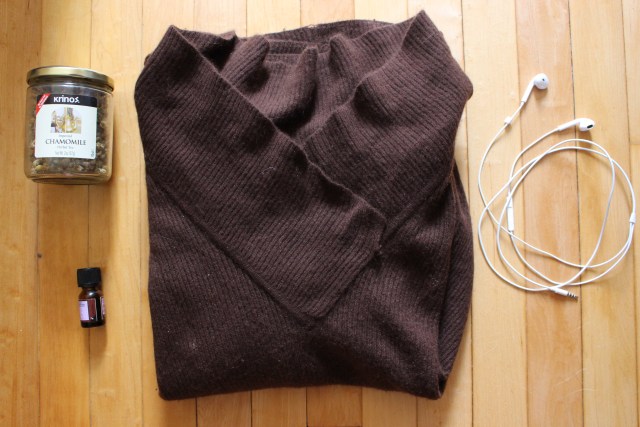
I am really big on using sensory things (smells! sounds! tastes!) because I’m really interested in the way our brain can learn to respond to them subconsciously, thus getting you involved in your ritual or habit on a deeper level — for instance, I’m trying to light the same incense every time I sit down to write so that my brain can get into a mood for writing more effectively — but of course it’s not necessary, especially if your ritual is more about intention or honoring a part of your craft. For another example, if I wanted to start a new project or venture with the right intention and energy, I might pick out a tarot card that I think is related to it and light a candle while I focus on the concepts of the card and my plans.
Once you’ve made a plan for your ritual, the important thing is to carve out real space and time for it, even if the space is “sitting on your bed” and the time is “five minutes.” Focus and immerse yourself as much as you can, noticing how you feel, the sensations you experience, let yourself enjoy it. And to the extent that your ritual is something you want to do regularly, continue making a space in your life for it.
What do you want or need ritual for in your life? Up to you! It can be an anchor, something that happens at the same time and in the same way and that you have control over, even if it’s as small as having a cup of coffee on your porch each morning. It can be a spell, I think, if that’s what you need it to be, and especially if you want to include items or practices that are specific to your craft. It can be a promise to yourself, a commitment to keep showing up for yourself in the same way no matter what — something about the repetition is important, the fact that you’re doing something for this part of yourself more than once, prioritizing it and you over and over. It can be a point of connection, something you share with other people in your life or a way to be in touch with spirits or deities that are important to you. The constant, I think, is that (as with many things!) you get out as much as you put in, and the benefit of giving yourself this thing is as big as you are willing to take it (and yourself, and your needs) seriously.


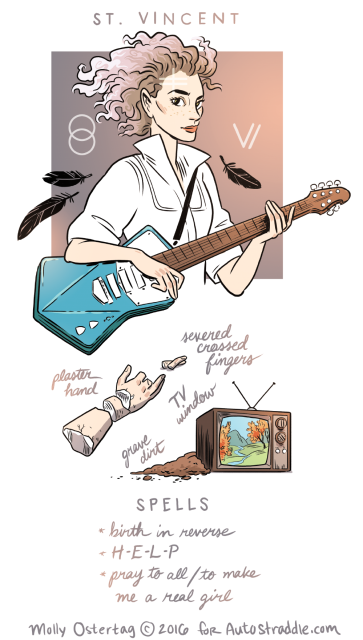
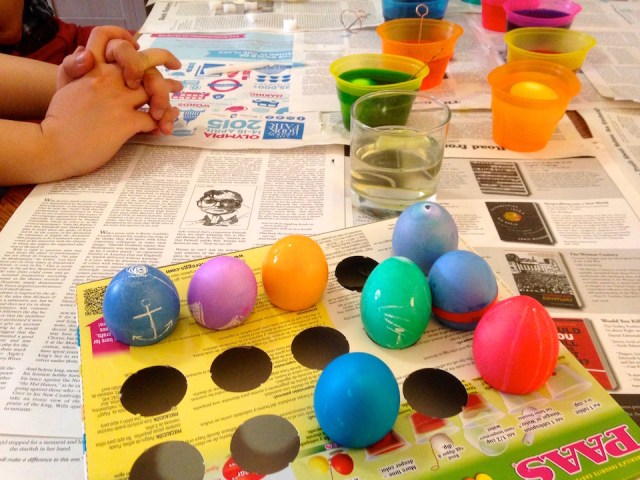

OMG the drawing of St Vincent is amazing! Also the playlist and Rachel’s piece on rituals and I guess actually this whole column.
ahh i’m so glad to hear it!
I just love Witch Hunt so much!
N.K. Jemisin also wrote a really good response to Rowling’s stories that, I think, touch on how to write about different cultures without being appropriative.
http://nkjemisin.com/2016/03/it-couldve-been-great/
(I love N.K. Jemisin with all my heart and will take any chance to link to her.) (Also, I love this column. Thanks for writing it for us.)
One of the things NK Jemisin mentions is doing research and it kills me that JK Rowling with all her success she could at the very least hired a researcher if she didn’t feel like doing it herself.
Because holy shit we live in the INFORMATION age and this morning I was curious about Oneida folk lore with the press of a button 0.38 seconds and one of the top results was guess what? A Oneida Nation official website.
I saw the word “Haudenosaunee” when looking through the lore, wondered if that had some to do with Iroquis league I remember reading about in elementary school that inspired “Our Founding Fathers” and in 0.44 seconds I found out not only yes but it is a Confederacy and they have a flag.
http://iroquoisnationals.org/the-iroquois/the-iroquois-flag/
If I remember correctly UK folks aren’t suppose to steal your things if you have a flag, but clearly JK Rowling was unaware that they had a flag and unaware she was breaking those rules. Because she couldn’t take SECONDS out her day to learn that.
Is this ranty? Yep. Did I take this too personally for a descendant of the colonizers and not the colonized? Maybe, but this land and its peoples were plenty interesting and worth research before my ancestors got here stealing and genociding all of the things.
Also there is this webcomic I read called Snow by Night that get billed as A Tale of Colonial Fantasy and if it can address indigenous details so could a big time author.
I’m so ready to do deep spring cleaning! I’ve had an incredibly busy and really hard term, I just finished all my finals a few days early, so I have about two weeks of spring break. My apartment needs deep cleaning and reorganizing. I’m getting a dining table soon and I’m really excited for the new energy that the table and cleaning will bring into my space. I’m ready to refresh and restart.
Update: I listened to that playlist, felt pretty damn great about myself, enough that I wanted to clean right away, then I vacuumed the whole apartment really well. I’m feeling so good!!!
NICE WORK jay!
Oh goodness, thank you for sharing “Your Type.” It’s Carly Rae Jepsen’s own “Dancing on My Own.”
I’d never actually read this column before because I’m not really into “witchy” things but this was actually really fun and rewarding to read and I’m really glad it was written. Thanks for appealing even to us non-witchy types.
you can balance an egg only on the spring and the fall equinox.
!!!
My typical rite of spring (and sometimes the vernal equinox) had been to find a patch of clovers with good amount of blossomed clover flowers, with my hair down frolick bare foot in specific pattern(ok just skipping and spinning about until I spot the “right” blossom), then part my hair into portion(s) by hand, braid a portion (usually forelock) and lastly weave a blossom or clover into said braid(s).
Didn’t expect that from a morbid pile of bricks did ya. :P
Would anybody want to know how to weave a clover or flower into a braid?
I should get with the times, get a tumblr and make a couple witchy/flower child-ish tutorial. Maybe
I am not able to do my typical rite of spring (yet) and also I feel more like bear reemerging after hibernation this spring. But rather than being lethargic I’m kinda hangry and dangerous because a flood or something scattered my food source and I might venture too close to humans for their well being.
Each time I see one of the Witches Who Sing illustrations lately I’ve been wanting to say I’m a witch that sings too, but I haven’t had the words to describe my self as I don’t use actual lyrics most of the time and it seems to come from the Northern Heathenry that I have had some trouble accepting and acknowledging because it’s something that’s been over run by patriarchal white power weirdos and another…factor.
But I have a word now, I think.
Galdrkona
And as usual lovely round up y’all.
Much love to the Haitian Vodou piece, I knew about the Ghede loas and the especially the inherent queerness of Ghede Nibo but delighted to know the extend to which the rest of the loas are too.
May they help heal any fractures people of African descent feel between their blackness and their queerness.
I love every minute of this column. Thank you!